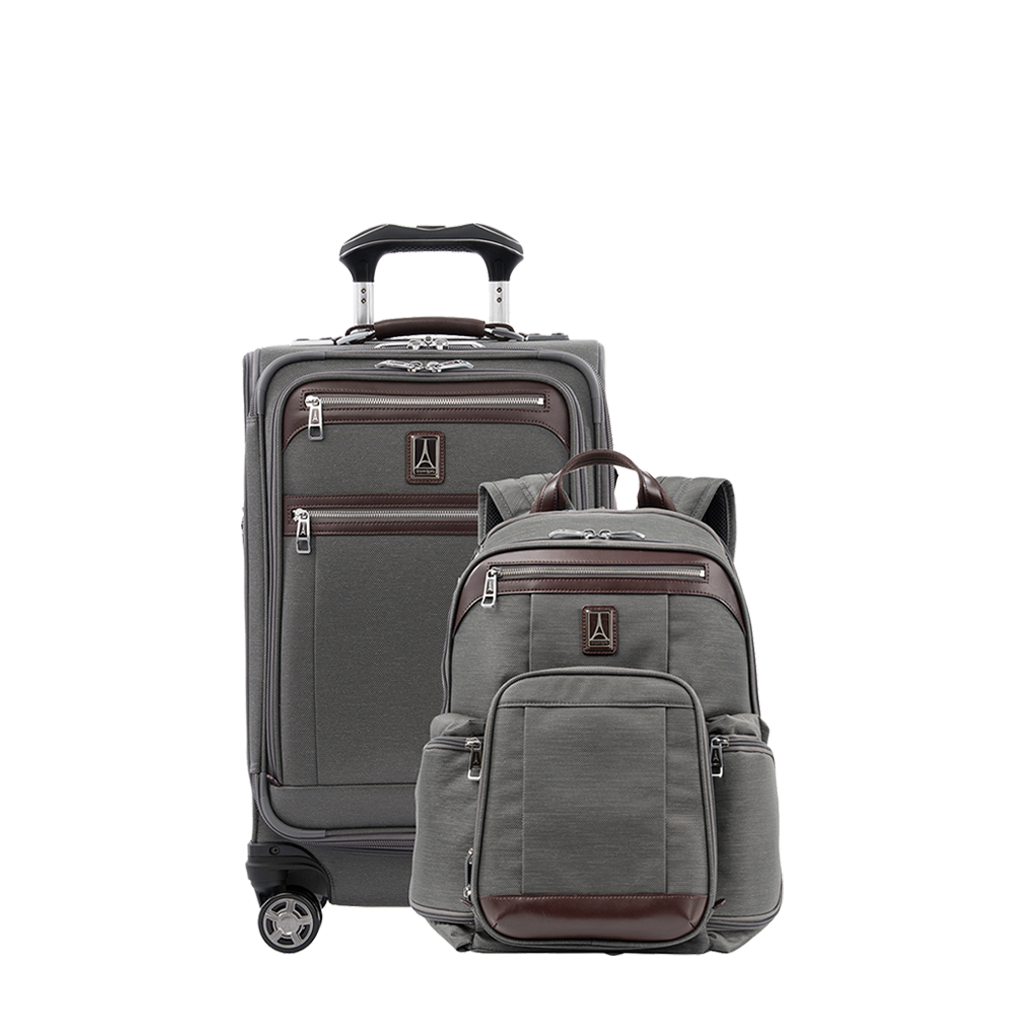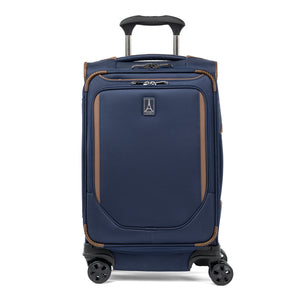Air Canada Carry-On Rules: Dimensions, Weight Limits, and Restrictions Explained
Introduction to Air Canada Carry-On Rules
Overview of Air Canada's Carry-On Policy
Air Canada's carry-on policy outlines the rules and regulations regarding what passengers are allowed to bring on board the aircraft. Understanding these guidelines is crucial for a seamless travel experience.Importance of Understanding Carry-On Rules for Smooth Travel
Comprehending Air Canada's carry-on rules is essential to avoid any last-minute surprises at the airport. By adhering to these regulations, passengers can ensure a hassle-free journey without delays or inconveniences.Brief Mention of Key Areas Covered in the Article
This chapter will delve into the dimensions, weight limits, and restrictions associated with Air Canada's carry-on policy. It will provide detailed information on how to pack efficiently to meet the airline's requirements. Stay tuned for insights on carry-on baggage dimensions, weight restrictions, and permitted and restricted items, as well as tips for complying with Air Canada's rules to make your travel experience with the airline as smooth as possible.Carry-On Baggage Dimensions
Maximum Size Limits for Carry-On Bags
Carry-on bags with Air Canada must adhere to maximum size limits of 23 x 40 x 55 cm or 9 x 15.5 x 21.5 inches. It's crucial to ensure your bag fits within these dimensions to avoid any issues during boarding.Standard vs. Small Item Dimensions
Understanding the difference between standard and small item dimensions is essential. Standard carry-on bags must fit within the specified measurements, while small items like handbags or laptop bags should easily fit under the seat in front of you.How Dimensions Are Measured
When measuring your carry-on bag, make sure to include wheels and handles in the dimensions. Airlines typically measure the entire bag, including any protruding parts. Be mindful of this when selecting your luggage to prevent surprises at the airport. Source: Air Canada Official WebsiteWeight Restrictions for Carry-On Items
Maximum Weight Allowance
Carry-on baggage with Air Canada must not exceed 10 kg or 22 lbs. It's crucial to adhere to this weight limit to avoid any issues during your journey.Weighing Process at the Airport
At the airport, your carry-on bag will be weighed at the check-in counter or security checkpoint. Ensure your bag meets the weight requirements before arriving at the airport to prevent delays and potential additional fees.Consequences of Exceeding Weight Limits
Exceeding the weight limit for carry-on items may result in extra charges or the need to check your bag into the hold. To avoid this inconvenience, pack efficiently and consider distributing weight between your carry-on and checked luggage. Remember, adhering to weight restrictions not only ensures a smooth travel experience but also helps maintain safety standards set by Air Canada. Source: Air Canada Carry-On RulesPermitted and Restricted Items
Common Items Allowed in Carry-On Luggage
- Air Canada permits common items like clothes, electronics, personal care products, and small sports equipment in carry-on luggage.
- Passengers can bring laptops, tablets, smartphones, and cameras as long as they meet security screening requirements.
- Small snacks and non-alcoholic beverages are allowed but may be subject to additional screening at security checkpoints.
Prohibited Items and Substances
- Prohibited items in carry-on luggage include sharp objects, firearms, explosives, and flammable materials.
- Hoverboards, self-balancing scooters, and lithium battery-powered devices are typically not allowed in carry-on bags.
- It's essential to check Air Canada's list of prohibited items to avoid delays during security checks.
Special Considerations for Liquids, Gels, and Aerosols
- Passengers are allowed to carry liquids, gels, and aerosols in containers of up to 100ml (3.4 oz) each in a clear, resealable plastic bag.
- This includes items like toiletries, perfumes, and medications. Larger quantities must be packed in checked baggage.
- During security screening, these items must be presented separately for inspection.
Carry-On Allowance by Fare Type and Cabin Class
Differences in Allowances Based on Ticket Type
When it comes to carry-on allowances, Air Canada tailors its policies to different fare types. While economy class passengers are typically allowed one standard carry-on bag along with a small personal item, business class travellers may enjoy additional privileges such as increased weight allowances or extra bags.
Business Class vs. Economy Class Carry-On Privileges
Business class passengers often have more leeway when it comes to carry-on items. They might be permitted to bring heavier bags or an extra piece of luggage compared to those flying in economy class. This distinction aims to provide added convenience and comfort for premium passengers.
Special Considerations for Air Canada Rouge Flights
Travelling on an Air Canada Rouge flight? Be sure to check the specific carry-on rules for this subsidiary airline. While the general guidelines may align with Air Canada's main policies, there could be slight variations or additional restrictions to be aware of.
Source: Air Canada - Carry-On RulesTips for Complying with Air Canada's Carry-On Rules
Packing Strategies
- Organize your items efficiently to meet Air Canada's size and weight requirements.
- Consider packing lightweight and compact clothing to maximize space.
- Use travel cubes or compression bags to condense bulky items.
Using Baggage Sizers
At the airport, take advantage of Air Canada's baggage sizers to ensure your carry-on fits within the specified dimensions. Adjust as needed to avoid issues during boarding.
Preparing for Security Screening
- Place liquids, gels, and aerosols in containers of 100ml or less.
- Present these items separately during security checks for quick inspection.
- Keep electronics easily accessible for screening.
Consequences of Non-Compliance
Potential Fees for Oversized or Overweight Bags
Carrying oversized or overweight bags with Air Canada can lead to additional charges. Exceeding the maximum dimensions of 23 x 40 x 55 cm (9 x 15.5 x 21.5 inches) or the weight limit of 10 kg (22 lbs) may result in fees. It's crucial to pack efficiently and within the specified limits to avoid these extra expenses.Gate-Checking Process for Non-Compliant Items
If your carry-on does not meet Air Canada's regulations, you may be required to gate-check it. This process involves handing over your non-compliant bag at the gate, where it will be placed in the aircraft's cargo hold for the duration of the flight. Gate-checking can cause delays during boarding and upon arrival, so it's best to comply with the rules to prevent this inconvenience.Delays and Inconveniences Associated with Baggage Issues
Failure to comply with Air Canada's carry-on rules can result in delays and disruptions to your travel plans. Whether it's due to having to pay extra fees, gate-checking your bag, or facing scrutiny during security checks, non-compliance can lead to a stressful and less efficient journey. To ensure a smooth travel experience, it's essential to adhere to the airline's guidelines.Source: Air Canada Carry-On Rules
Conclusion and Additional Resources
Recap of Key Points
- Air Canada's carry-on baggage rules specify maximum dimensions of 23 x 40 x 55 cm and a weight limit of 10 kg.
- Understanding these rules is crucial to avoid potential fees, delays, or denied boarding.
- Standard bags must fit the specified dimensions, while small items like handbags should fit under the seat.
Where to Find More Information
For more detailed information on Air Canada's carry-on rules, visit Air Canada's official website. This source provides up-to-date guidelines to help you prepare for your journey.
Importance of Checking for Updates
Before your travel date, it's essential to check for any updates or changes to Air Canada's carry-on policies. Regulations may evolve, and staying informed can prevent unexpected surprises at the airport, ensuring a smoother travel experience.


